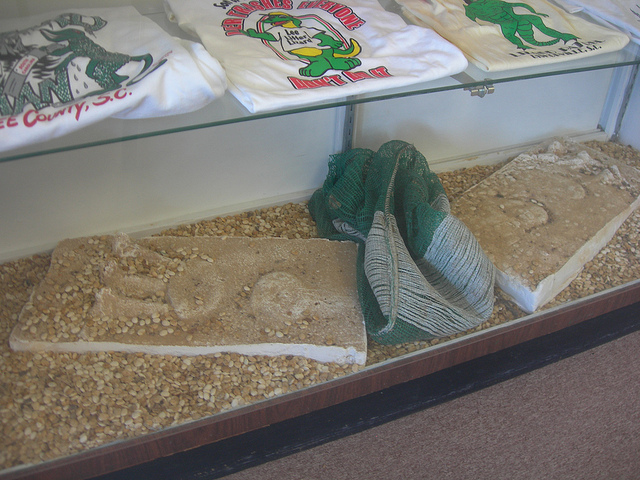
Mothman statue, Point Pleasant, West Virginia (Photo by Flickr user OZinOH via Creative Commons license)
Americans sometimes brag about the strangest things.
Hidalgo Texas, where killer bees first came to the United States in the 1980s, proudly proclaims itself to be the “Killer Bee Capital of the World”. Parkfield, California, the “Earthquake Capital of the World”, is happy to provide a map directing visitors where to drive to see fault lines.
There are probably too many “capitals of something” in the United States to keep count – places like the “Fruitcake Capital of the World”, “Jump Rope Capital of the World”, “Cowboy Capital of the World” and “Leap Year Capital of the World”, just to name a few.
These sometimes outlandish slogans are often a point of civic pride, which help establish civic identity while attracting the attention of outsiders. The designations can have economic value, which is why some cities and towns go to great lengths to make them stick.

(Photo by Flickr user Seth Anderson via Creative Commons license)
“Most capitals of the world are usually smaller towns. They’re not big cities. Big cities do not need to call attention to themselves that way, whereas a small town does,” said Ken Smith, senior editor of Roadside America, which catalogs off-beat tourist attractions across the United States. “A town wants people to come, they want visitors. Tourists buy gas, eat, buy souvenirs. [They] help the local economy.”
Sometimes towns fight over the same designation. Claxton, Georgia and Corsicana, Texas both call themselves the “Fruitcake Capital of the World”, and at least three towns claim to be the birthplace of the hamburger.
For Roadside America, the towns that truly make the cut are the ones that are not only able to defend their claims, but also put a little effort into it as well.
“In our view, what separates that is, does the town the follow through and put up something that you can look at, like a statue or a monument?” Smith said. “Is there something physical?”
That’s why Seymour, Wisconsin gets the nod from Roadside America when it comes to being the birthplace of the hamburger.
“Because they’ve got a statue of the guy who they claim invented the hamburger and he’s holding a hamburger. They’ve got a giant hamburger there that you can pose next to,” Smith said. “Those are commitments, physical commitments and, to us, that makes it a worthwhile stop.”
There are a number of U.S. towns that are even proud of their monsters.

Lizard Man’s footprints at the South Carolina Cotton Museum in Bishopville, SC. (Photo by Flickr user Jimmy Emerson, DVM via Creative Commons license)
Bishopville, South Carolina has Lizardman, a reptile-like humanoid that is believed to have attacked cars in the late 1980s.
Point Pleasant, West Virginia is home to Mothman, a moth-like flying man who was first spotted in the late 1960s.
The Fouke Monster, a Sasquatch-like figure, reportedly attacked a local family and livestock in Arkansas in the early 1970s. All three towns have statues of their monsters that tourists can pose with for pictures.
“So it’s an interesting twist on the notion of civic pride,” said Smith. “That’s kind of changed over the years and now we can be proud of these things that, perhaps formerly, we might consider in poor taste or we might be embarrassed by something.”
Smith isn’t sure if this notion of towns adopting a slogan or nickname is uniquely American, but he tends to think so.
“We like to beat our chests and call attention to ourselves,” he said. “It sounds brazenly American.”
While the occasional slogan might be contrived or insincere, Smith says most of these small towns feel genuine pride in their silly, unique or sometimes-slightly absurd oddities.
And as long as the towns continue to embrace their off-beat attractions, chances are that tourists will, too.






















Please get a copy of “When Culture Overrules God and Reason” from Amazon .com and see what is important in life.
Seriously, you’re spamming an article about roadside attractions with your book pitch? BTW, I’m not sure you understand that reason and “God” don’t exactly mix.
Leaping Greetings!
Great article. 🙂 Thanks for recognizing the “Leap Year Capital of the World” in Anthony, New Mexico/Texas. Maybe you can attend the Leap Year Festival in Leap Year 2016!